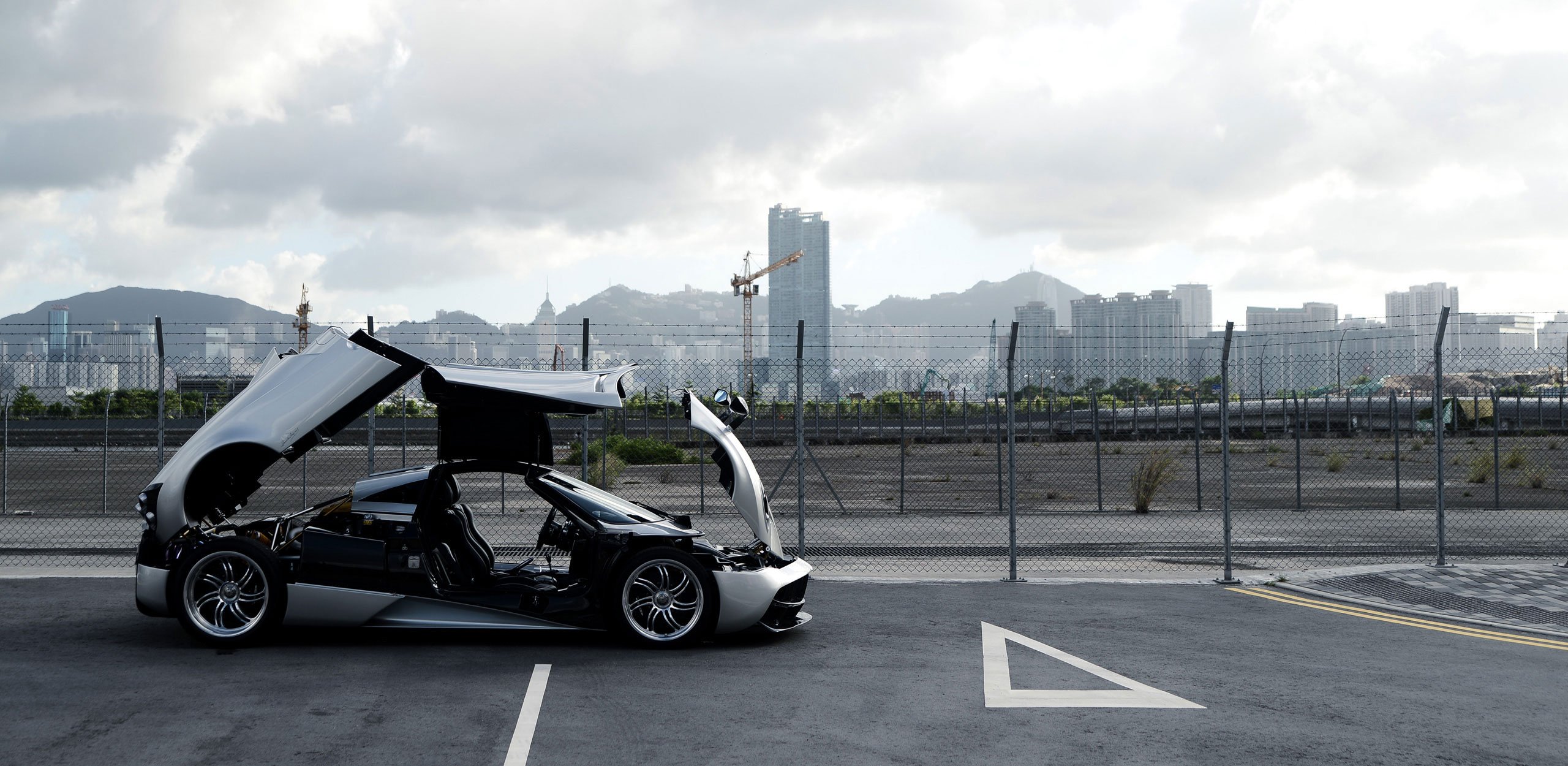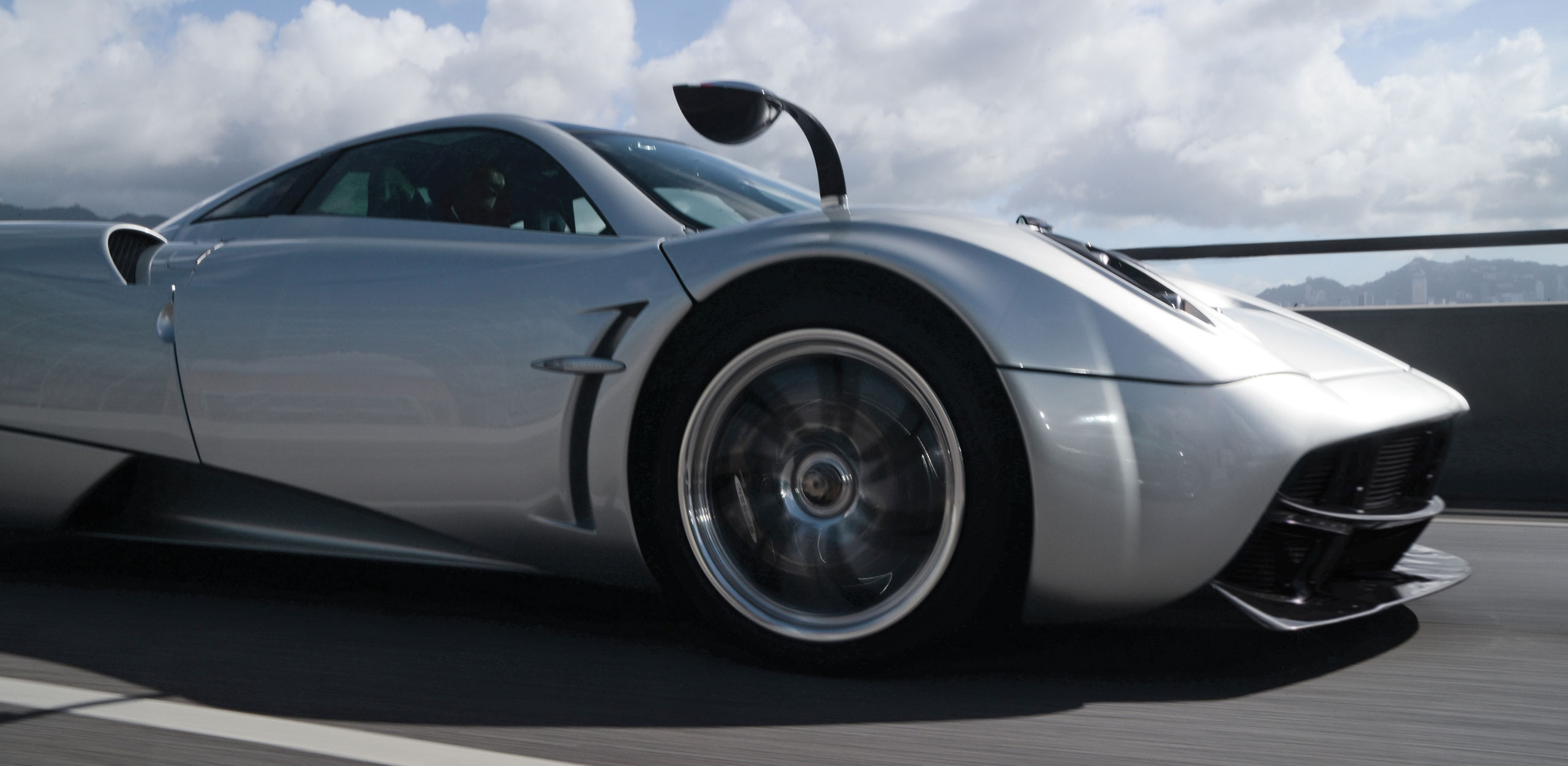
Modern car companies find themselves in the unenviable position of having to balance production costs, design consistency and marketing focus, while trying to produce memorable, if not sensational, flagship vehicles. Their success rate is not guaranteed, with only a few truly exceptional pieces making their way into the hands of fortunate owners.
The artisans at Italy’s Pagani Automobili, with the legendary Zonda firmly establishing their pedigree as a producer of world-class hypercars, have no such limitations barring their way in pursuit of automotive perfection.
Enter their latest masterpiece, the Huayra. Awkward to pronounce, elegant to behold. Horacio Pagani and his team have left nothing to chance, with an astonishing level of detail unequalled by any of their peers. From the proprietary, titanium fasteners, each inscribed with the Pagani name, to the revolutionary carbotanium monocoque tub, every aspect of this amazing machine has been designed and executed by people who truly love the cars they’re creating. The look, with doors and lids fully open, is pure Transformers. The drive is raw and the gear changes punch the wind from your lungs, while maintaining wild, seemingly impossible levels of grip through the corners. The Huayra can comfortably claim its place at the pinnacle of modern hypercar hierarchy.
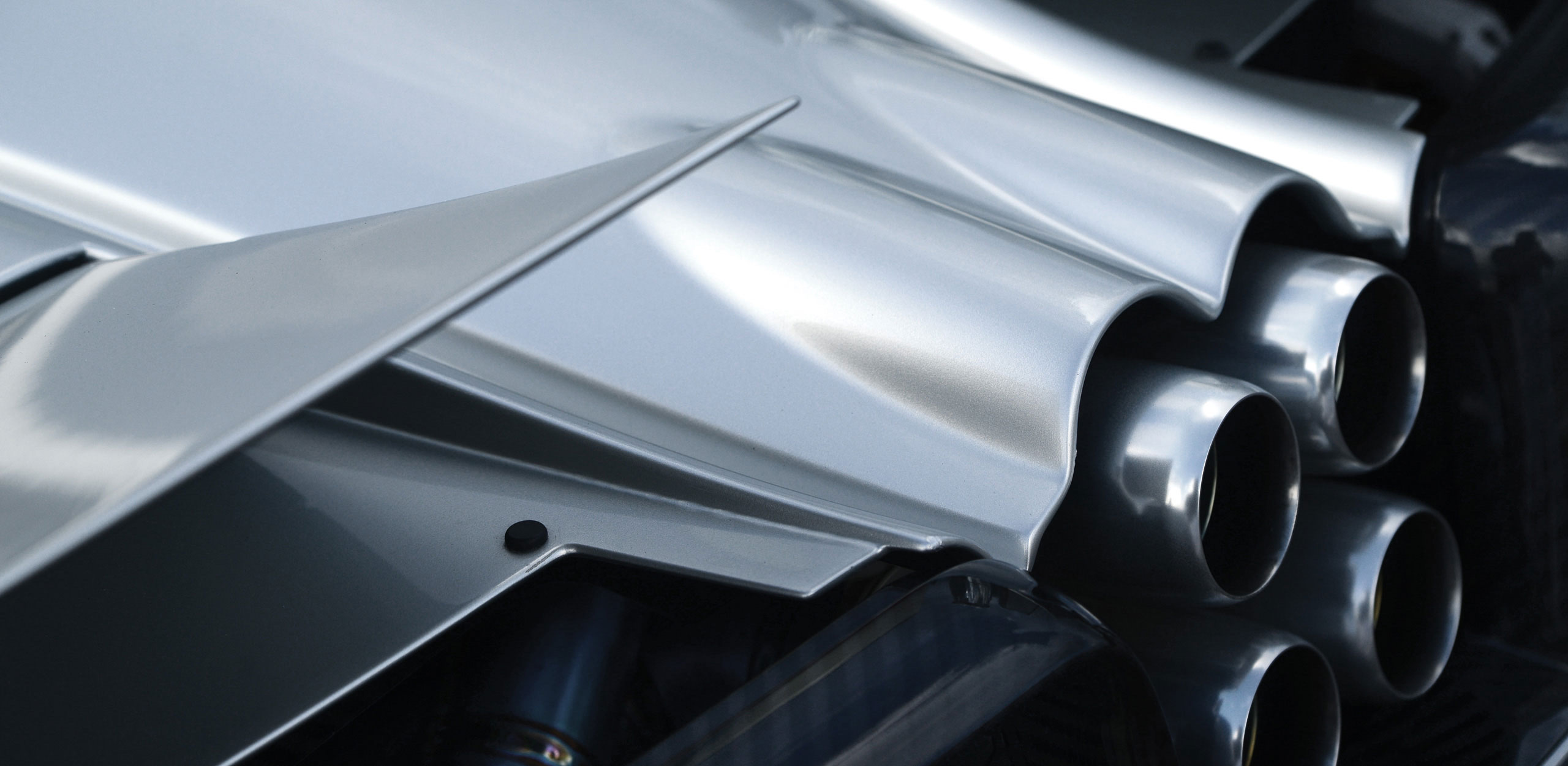
Seven years were required to bring the Huayra from concept to creation, with the result of this fanatical attention to perfection poised menacingly before us. A worthy replacement for the Zonda required Horacio to start in 2003 with a clean sheet design. Eight scale models were created, along with two full-size study models and five prototypes. Pagani himself ordered all machinery cleared from the finishing area of the factory, in order to study one of the wooden models from every angle, without any distraction, before arriving at what would become the final design.
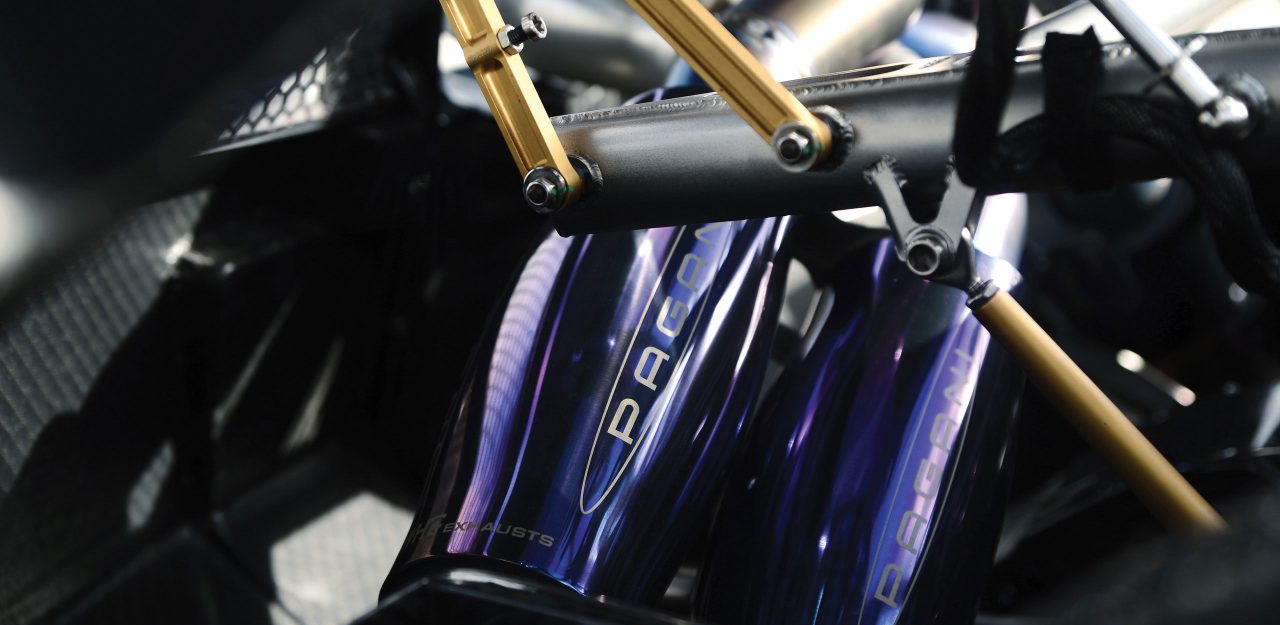
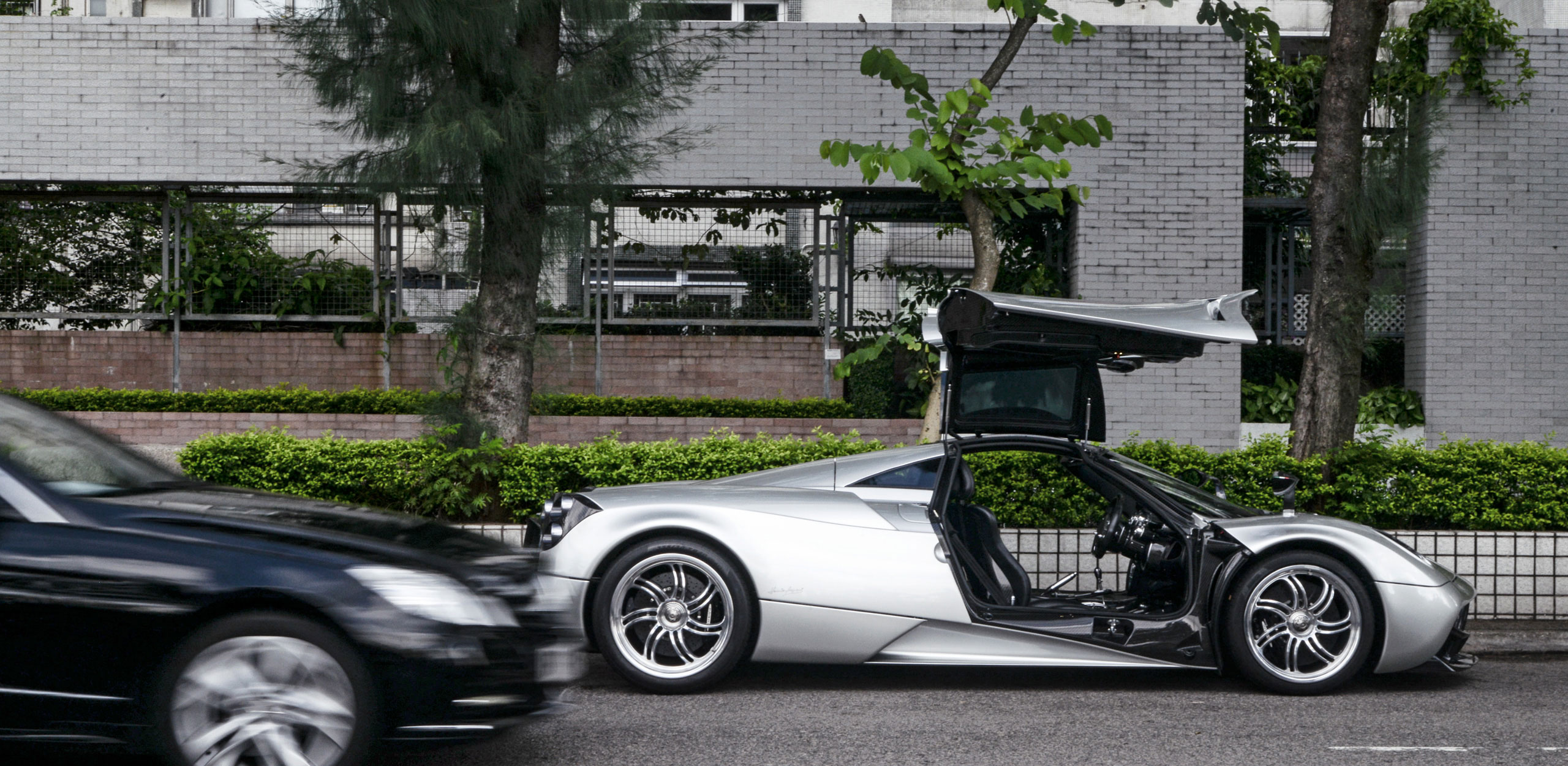
With ultimate performance as their goal, Pagani turned once again to the AMG division of Mercedes to provide the motive power for the Huayra. AMG’s research and development of a new generation of turbocharged engines dovetailed perfectly with Horacio’s quest for an engine powerful enough to meet his exacting requirements.
Four years into development and the first M1 prototype chassis was fitted with the AMG V12 bi-turbo engine, ready for testing. The development was faced with the rare dilemma of having an engine that produced too much horsepower for their M1 prototype. With careful consideration given to a chassis that was lighter and more highly refined than a conventional Mercedes platform, AMG exerted their vast engineering expertise towards producing a power plant uniquely suited to the innovative Pagani frame-work.
The first Huayra prototype, codenamed “PT1”, was completed one year later. With time spent testing in the extreme conditions of South Africa and Sweden, the development model was ready for a trip to the USA for emissions tests. 2009 saw the second prototype, PT2, built and fitted with smaller turbochargers. ECU development was handled by the wizards at Bosch in Germany, where the coordination of ABS, ESP and other management systems was refined to Pagani’s exacting standards. PT3, the third prototype, was built for the inevitable crash test, while an inadvertent crash to the M1 prototype brought about the existence of yet another stable-mate, namely PT4, which emerged with specifications close to those required for the production version. In December of that year, the first production-ready Huayra was built, and in time for the 2011 Geneva Motor Show, Pagani’s newest creation was unleashed upon a waiting world.
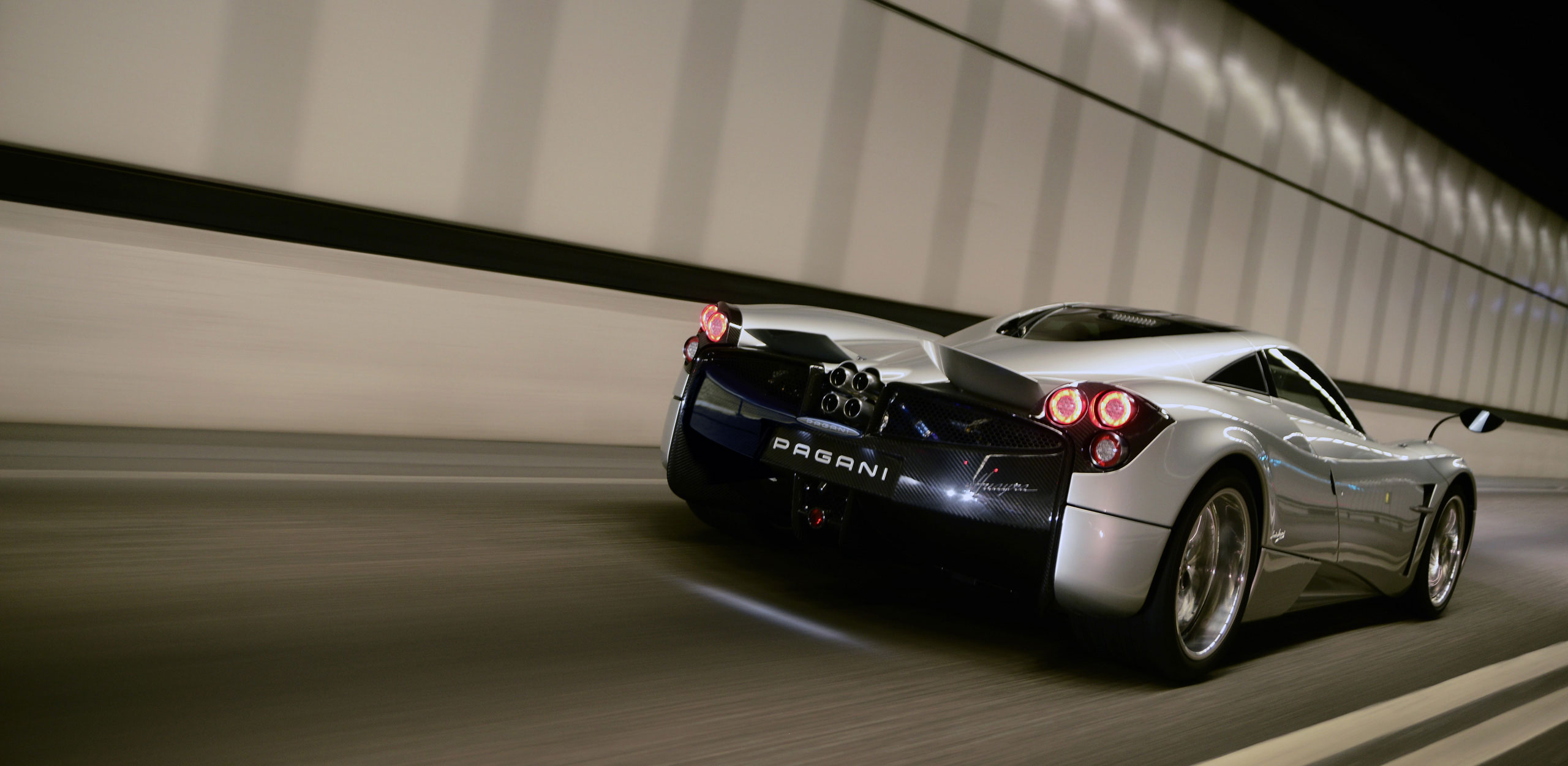
Huayra’s lineage is unmistakeable, but it shares little beneath it’s elegant carbon skin, with its predecessor, the venerable Zonda. Both cars benefit from superb AMG V12 engines, with the Huayra’s advantage coming from twin turbos that raise the output to 730bhp with a orbit-altering 1000 Newton-meters of torque. Power reaches the rear wheels through a 7 speed automatic-clutch gearbox, which allows a top speed of 370km/h. Grams of mass were shed in the most elegant manner, with a stunning, four pipe exhaust system rendered entirely in titanium, weighing in at a mere 10kg.
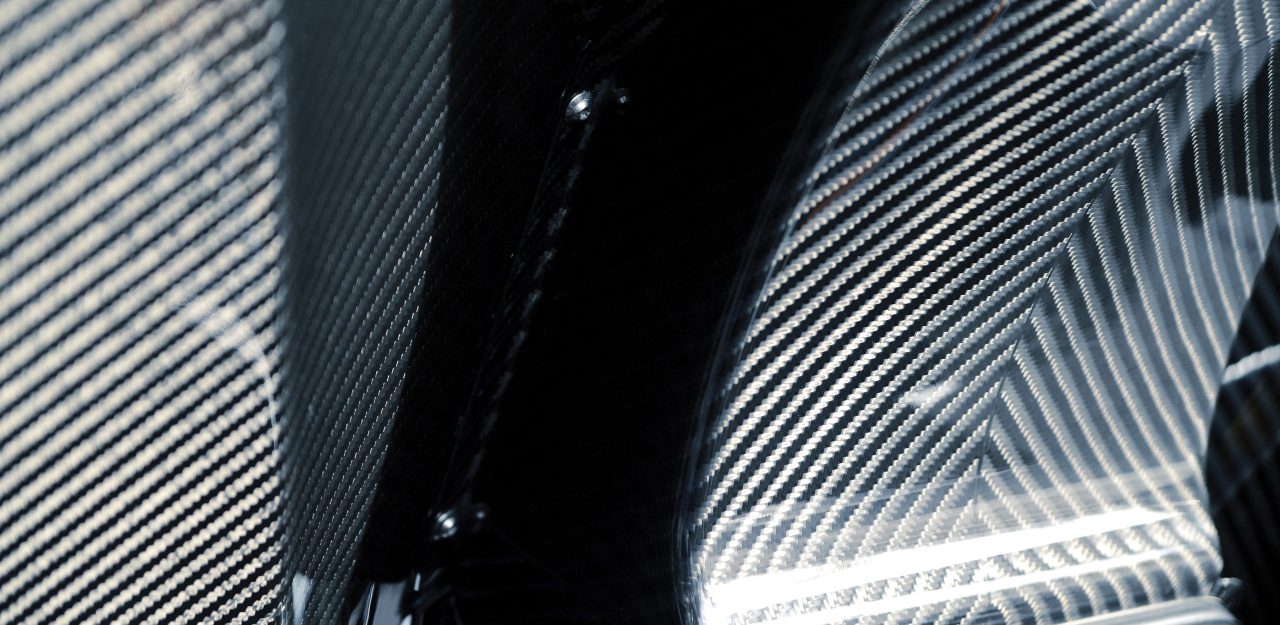
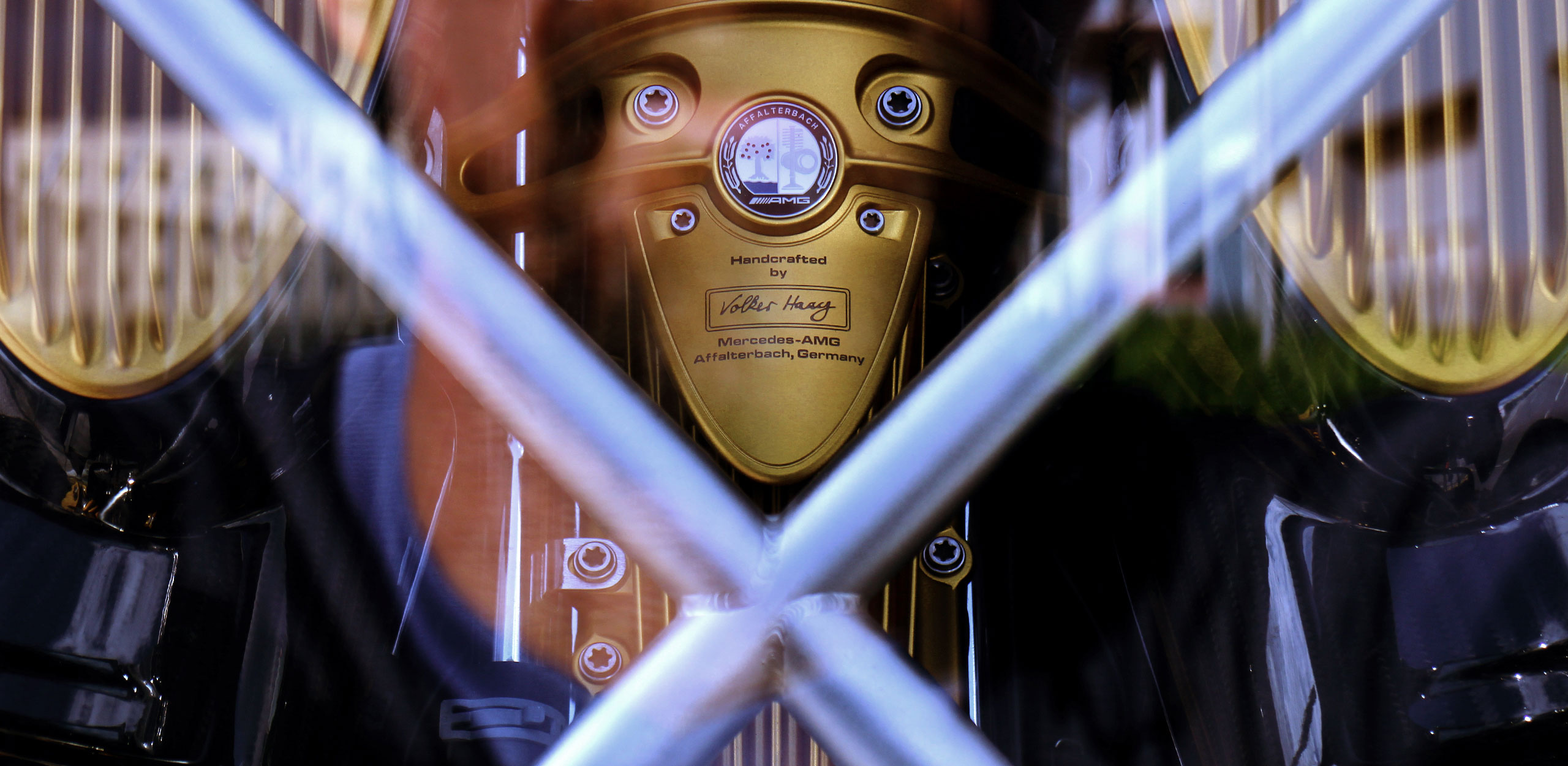
Living up to the awesome reputation of the Zonda series, Huayra has sought to balance race ready performance in a road-legal package. We put this to the test, having been granted the rare opportunity to pilot this monster from East Kowloon to Hong Kong Island. Where the mighty AMG V12 of the Zonda states its intention in raucous, normally-aspirated glory, the Huayra’s engine sounds, dare we say it, subdued, scarcely hinting at the mayhem ready to be unleashed by an unwary stab at the throttle. From as low as 1,100rpm, the twin-turbo engine feels remarkably tractable, easily meeting Pagani’s requirement that it should provide the immediate throttle response of a normally-aspirated unit. Dialling in more throttle through a corner, even at our seemingly sedate pace, promises to exceed the grip of those steam-roller treads out back.
Once we’ve straightened out and found adequate room, a gentle push on the pedal, with a mere 2,000rpm showing on the tach, brought such a brutal rush of acceleration that we were hesitant to press further. That brief lapse in judgement was swiftly overcome, as the needle swept around to 3,000 rpm, then 4,000rpm, then onwards to a devastating launch that much in common with the Millennium Falcon going into hyperspace. The banshee wail generated by the Zonda is sorely missed, but having experienced fury of the purposefully tuned exhaust note of the Huayra, we can state unequivocally, that it’s equally addictive.
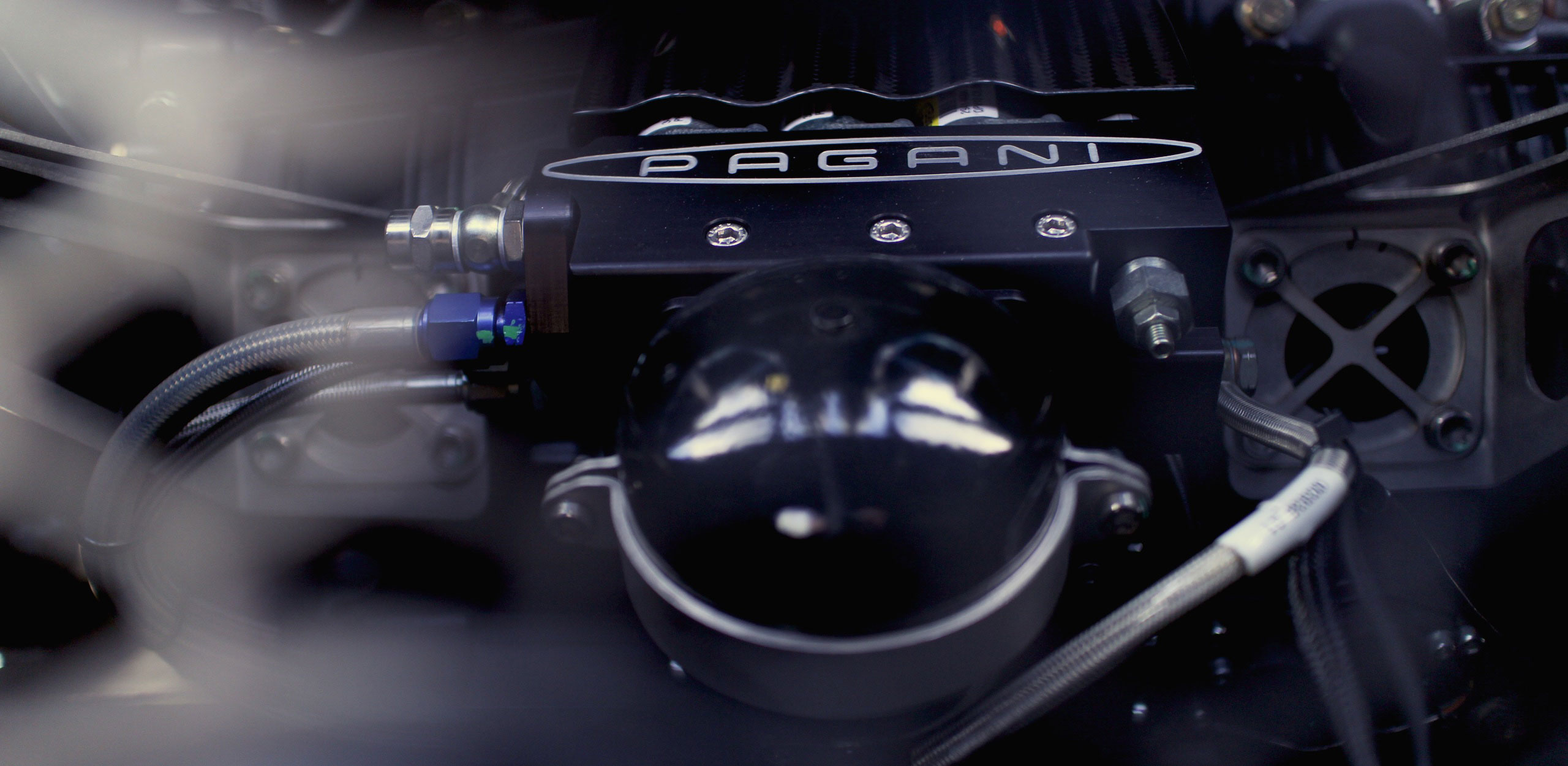
Active aerodynamics, as realized by Horacio Pagani and company, has raised the bar far above that of the current crop of wings, spoilers and air-brakes. Four independent, computer controlled flaps, deploy to provide additional downforce during cornering, with varying levels of pitch applied to each flap so that body roll is well managed, in addition to minimizing dive during hard braking. Technology that’s banned in Formula One racing has found its way onto public roads. Amazing.
During the ride over to our photo shoot, we became aware of a crack in the Huayra’s seemingly impregnable armour; the sluggish, low-speed response of the single auto-clutch transmission. Snappy gear changes in high-speed cruising were deemed by Pagani to take priority over the weight penalty imposed by dual-clutch boxes. Indeed, the single-clutch gear box weighs in at a scant 96kg, nearly half the weight of a comparable dual-clutch 7speed. A wise choice, regardless of the minor consequences.
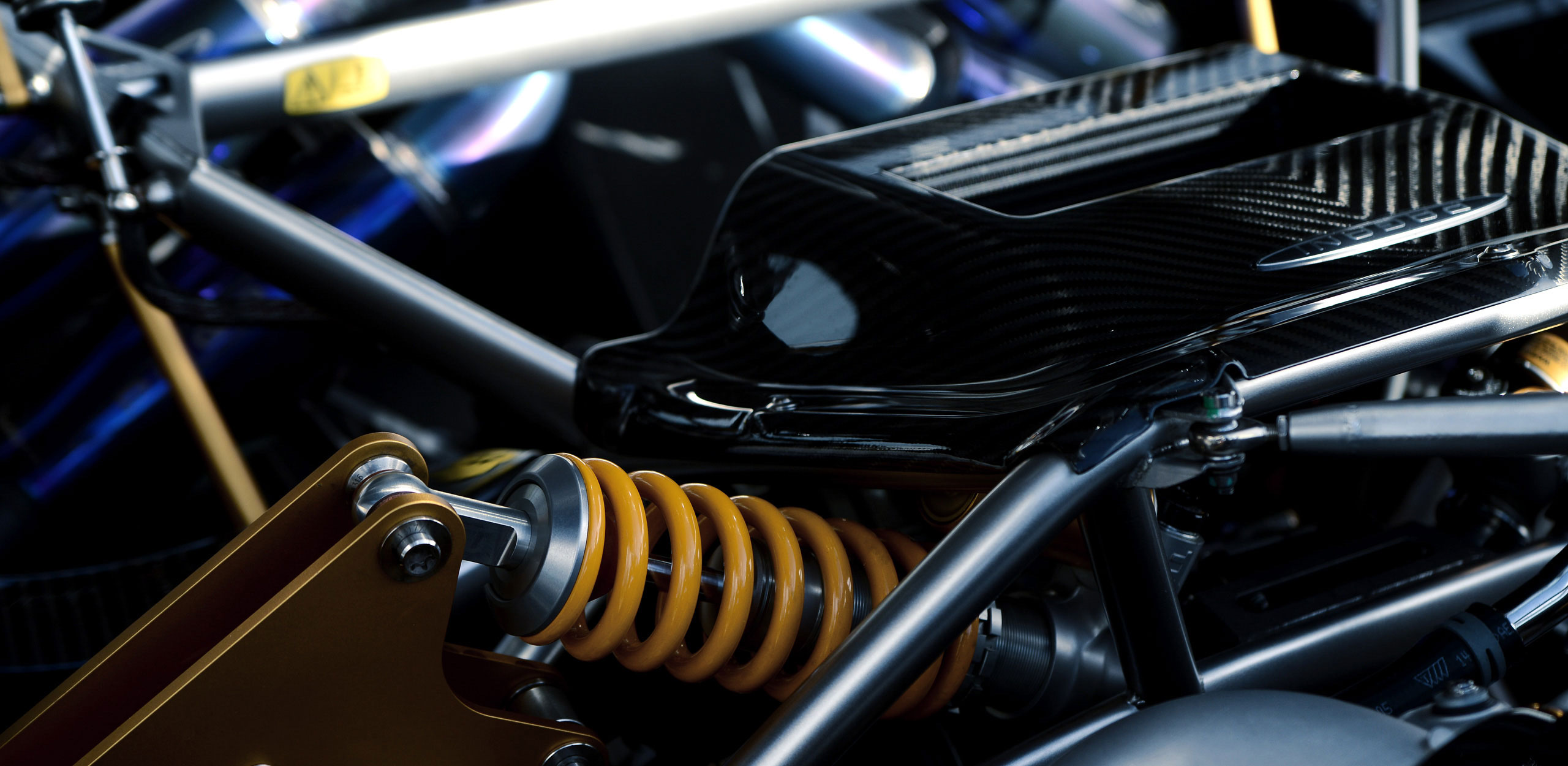
Once we arrived at the outskirts of the cruise terminal for our photo shoot, we had a chance to drink in the obsessive level of detail that’s to be found everywhere you look in this rolling sculpture. The instrument binnacle is painstakingly carved out of billet aluminum, with dials that exude precision, having been machined by a Swiss watch manufacturer. The cabin sports a dizzying array of carbon-fiber, the finest grade hides and bespoke titanium fasteners. These are used throughout the car, each one with the “Pagani” logo proudly laser-etched into the metal. Highlights abound in this interior, with the gear lever and gate deserving special mention. Clearly, its unnecessary to have a gated stick in a car with shift paddles behind the steering wheel. But it’s a gorgeous piece of sculpture, exposed and somehow skeletal, with a positive, reassuring mechanical sound when the next gear is selected. The entire car is a testament to automotive art, with embellishments like this sharing much in common with a tourbillion watch movement; unnecessary, but oh so elegant.
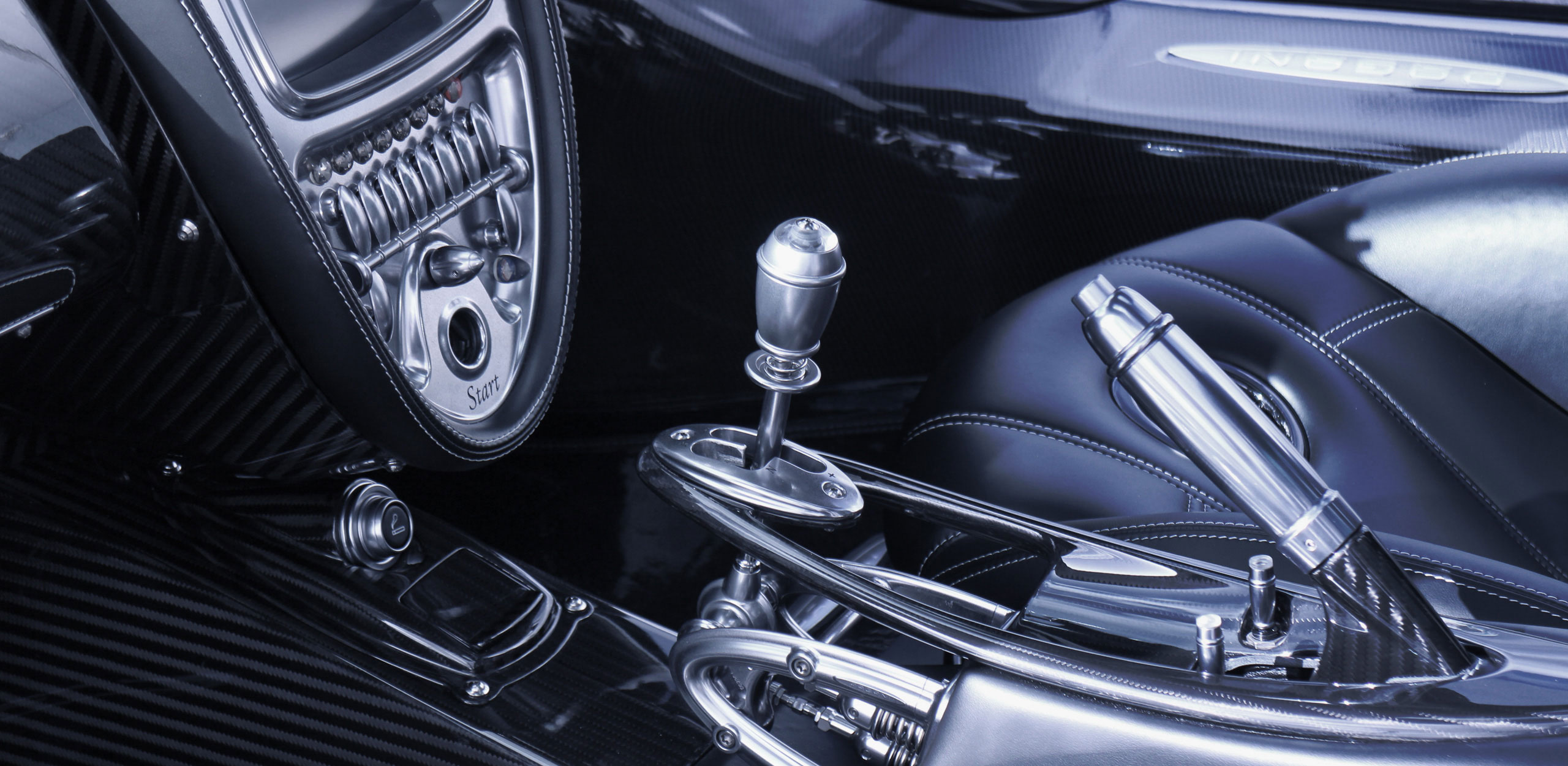
The steering wheel is an intoxicating combination of carbon-fiber, leather and aluminum, with those aforementioned shift paddles just a finger’s breadth away, while a dizzying array of switches and buttons festoon the spokes. Headlights, turn signals, wipers and, oh yes, the horn. Normal, Sport and Race driving mode selection is made with a dial not unlike the Ferrari Manettino. Even the humble key has been transformed into a pocket-sized piece of sculpture, carved in the shape of the Huayra. Not only will it start your car, it also incorporates a USB memory stick, so you can’t possibly forget to bring your music with you on the road. Horacio Pagani has made no secret of his reverence for the great Leonardo DaVinci. With this masterpiece of automotive design, Horacio has paid homage to DaVinci, who stated that “Art and science should walk hand-in-hand.”
